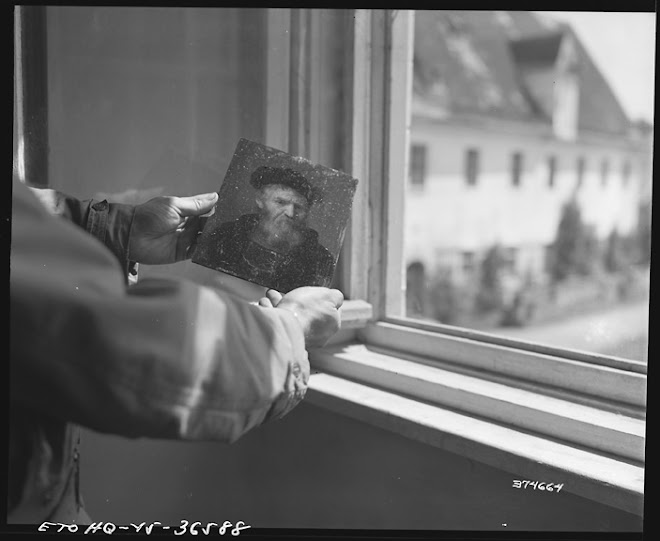Yesterday, The New York Times City Room described the quiet theft of two small paintings in New York City. On the Upper West Side, a brownstone houses the Nicholas Roerich Museum. Its rooms are filled solely with the work of the obscure Russian artist Roerich, including his images of India, Tibet and Mongolia, where he traveled. In broad daylight, during the museum's brief visiting hours, someone removed a small painting from a wall, and walked out of the museum with it. A day or so later, the thief returned and walked out with another.
Together, the paintings are worth about $30,000. A motive for the theft remains unclear. But according to Daniel Entin, the museum's director, sale of the stolen art on the open market is unlikely. City Room quotes him as saying, “It’s hard for paintings to show up on the market because they’re registered and illustrated everywhere. I was told that nobody who wants to collect art buys it without checking first.”
The truth of such a statement is due in no small part to the issue of Nazi looted art. The art market has traditionally been one of the most secretive in the world, with dealers and auction houses guarding fiercely the identity of both buyers and sellers. But in 1998, the Washington Principles were endorsed by 44 countries. The Principles urge art institutions to fully investigate the provenances of any artworks in their possession, in addition to any artwork they might acquire. Today, museums all over, as well as major auction houses like Sotheby's and Christie's, now conduct serious provenance research into their art objects. The Washington Principles have contributed to a more transparent art market than has ever existed before.
The Terezin Declaration, just endorsed by 46 countries this past June, further emphasizes the importance of identifying an artwork's past. It stresses "the importance for all stakeholders to continue and support intensified systematic provenance research... and where relevant to make the results of this research, including ongoing updates, available via the internet."
Today, databases can be found that report not just Nazi looted art, but all stolen art. These databases, including Interpol and the Art Loss Register, are critical not only for victims, but for potential buyers, so that they can better ensure they are not purchasing stolen property. The problem remains, however, that there are those who are willing to buy art regardless of its past. And so, paintings will continue to disapear from gallery walls, whether from small museums on the Upper West Side or major institutions like the Van Gogh Museum. Which is why it is essential to recognize the significance of the lootings during World War II. Acknowledging the Nazis' art thefts contirubutes to change, not just for the consequences of the past, but for the future as well.
Friday, August 7, 2009
Tuesday, August 4, 2009
Historical Background
Nazi Germany undertook the greatest art conspiracy in history from 1933 to 1945. As part of a top secret plan to build the world’s ultimate museum, Hitler and his minions looted at least a million art objects, mostly from their Jewish victims. The widespread and organized confiscations were conducted so efficiently that it was not until the end of the war that the Allies had any idea of the real scope of the looting. In 1945, the then Director of the Metropolitan Museum of Art, Francis H. Taylor, reported that the Nazis had stolen European art treasures worth a total of $2 billion to $2.5 billion, between $24 billion and $30 billion today. The sum was more than the total value of all the artwork in the United States at the time.After the war came to an end, Allied troops uncovered stashes of Nazi looted art, hidden high in mountain castles and deep underground in salt mines. A small section of the U.S. Army known as the Monuments Men was assigned the hugely overwhelming task of recovering and returning as many of the looted art objects as possible. Recruited from America’s top museums, galleries, universities and studios, the Monuments Men achieved incredible success against nearly impossible odds, with the help of representatives from nations across Europe. Of the 600,000 paintings estimated to have been looted by the Nazis, approximately 500,000 were located and returned to owners or heirs. Most of the restitutions were accomplished within five years of the end of the war.
But today, nearly sixty-five years later, many looted art objects remain missing, and have yet to be returned to a proper owner. An estimated 100,000 paintings alone have never been restituted. Restitution efforts, however, are still continuing. Museums scour their collections for objects with suspicious ownerships. Heirs carry on the search for an art object that belonged to a lost relative. Each year, looted drawings, prints, sculptures and paintings are still being identified and returned to a proper owner. Many more, however, are still waiting to be found.
But today, nearly sixty-five years later, many looted art objects remain missing, and have yet to be returned to a proper owner. An estimated 100,000 paintings alone have never been restituted. Restitution efforts, however, are still continuing. Museums scour their collections for objects with suspicious ownerships. Heirs carry on the search for an art object that belonged to a lost relative. Each year, looted drawings, prints, sculptures and paintings are still being identified and returned to a proper owner. Many more, however, are still waiting to be found.
Subscribe to:
Comments (Atom)



